18 Risky Mexican Beaches To Skip + 3 Safer Alternatives Worth Visiting
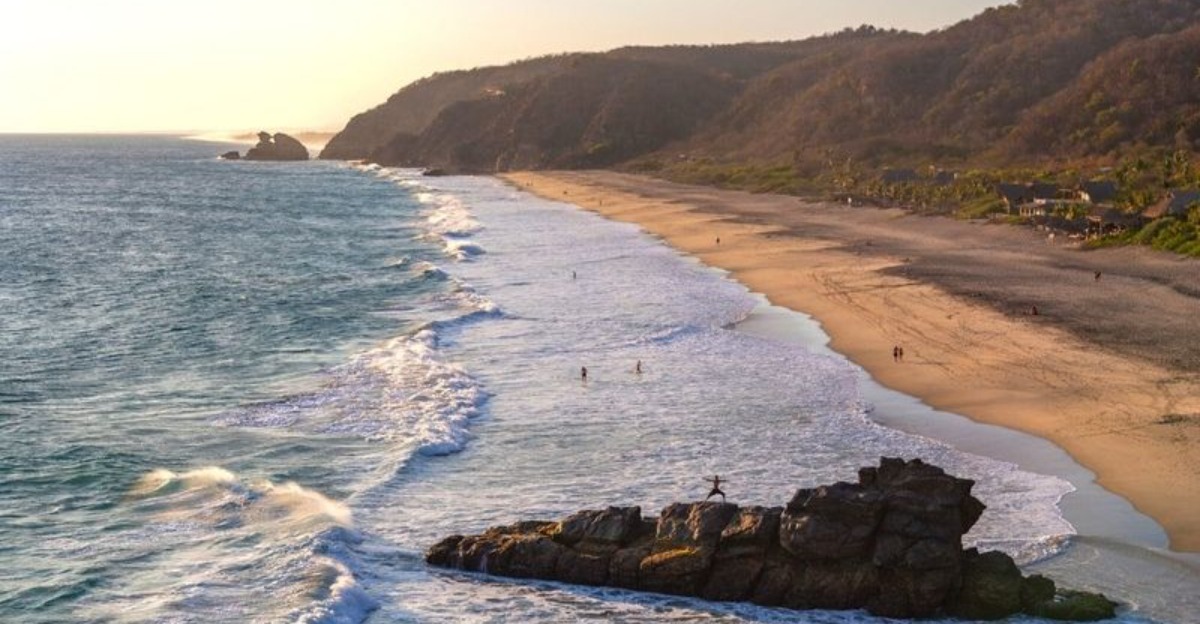
Mexico’s beaches are often postcard-perfect, but some come with hidden dangers that can turn a relaxing vacation into a nightmare. Have you ever arrived at a beach expecting paradise, only to feel uneasy—or worse, unsafe?
Between powerful riptides, rising crime in certain resort areas, and pollution concerns, it’s important to know where to tread carefully. I’ve done the digging so you don’t have to—highlighting beaches where caution is more than just suggested, along with nearby alternatives that are just as beautiful (and way less risky).
Whether you’re dreaming of soft sand under your feet or turquoise waves for days, this guide will help you enjoy Mexico’s coastlines with confidence. Ready to find out which spots to skip—and which deserve a spot on your bucket list?
1. Acapulco, Guerrero
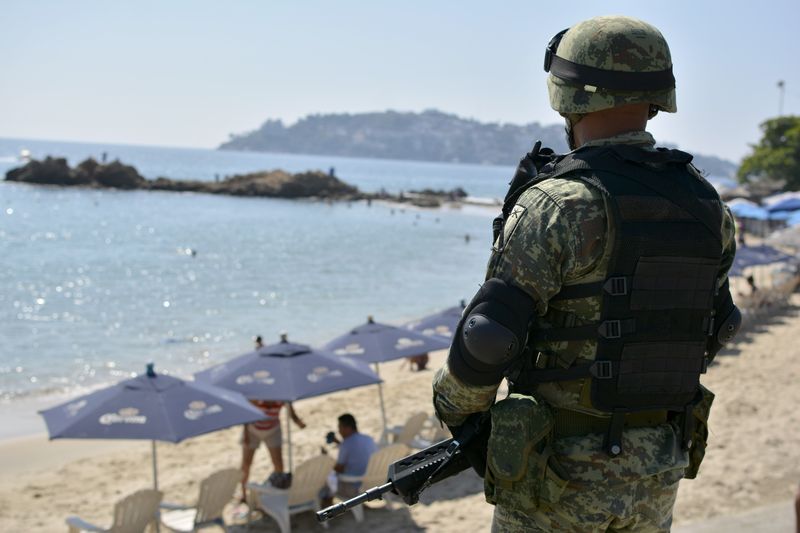
Once the playground of Hollywood stars, Acapulco has fallen from grace due to escalating cartel violence and crime. The beach itself features beautiful golden sand and blue waters, but the surrounding area has become increasingly dangerous for tourists.
Armed robberies and violent crimes occur even in daylight hours. Local police struggle to maintain control in many neighborhoods near popular beach zones.
If you’re determined to visit, stick to the tourist-heavy Diamante zone and never venture out alone at night. Most travel advisories recommend avoiding Acapulco entirely until security conditions improve significantly.
2. Playa Zipolite, Oaxaca
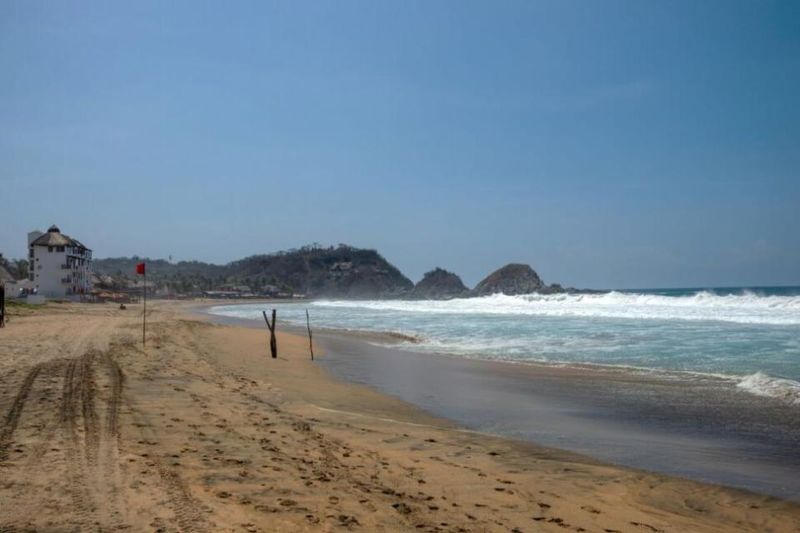
Known as the “Beach of the Dead,” Playa Zipolite earned its ominous nickname honestly. Strong underwater currents and powerful waves create dangerous swimming conditions that have claimed numerous lives over the years.
Red flags frequently warn visitors about hazardous conditions, but thrill-seekers often ignore these warnings. The beach lacks consistent lifeguard coverage, making emergency response times dangerously slow.
The hippie-friendly atmosphere and clothing-optional policy attract a steady stream of visitors despite the risks. Many travelers don’t realize the danger until they’re caught in a powerful riptide that can pull even strong swimmers out to sea.
3. Mazatlán, Sinaloa
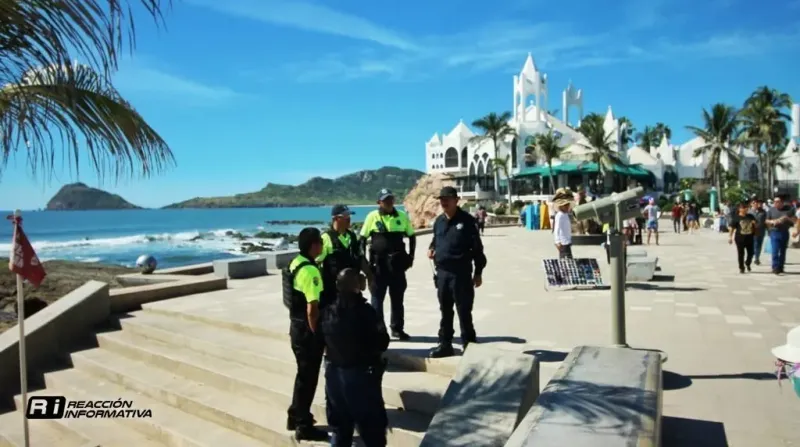
Mazatlán sits in Sinaloa state, home to one of Mexico’s most notorious drug cartels. While the tourist zone has improved security in recent years, violent crime continues to plague surrounding areas.
The beaches themselves are beautiful with golden sand stretching for miles, but cartel-related violence can erupt without warning. Tourists have been caught in crossfire between rival gangs or targeted for express kidnappings.
Pickpocketing and petty theft remain common problems along the beach areas. If you absolutely must visit, stick to the Golden Zone (Zona Dorada) and avoid venturing out alone, especially after dark when security risks increase significantly.
4. Isla Holbox, Quintana Roo (Safer Alternative)
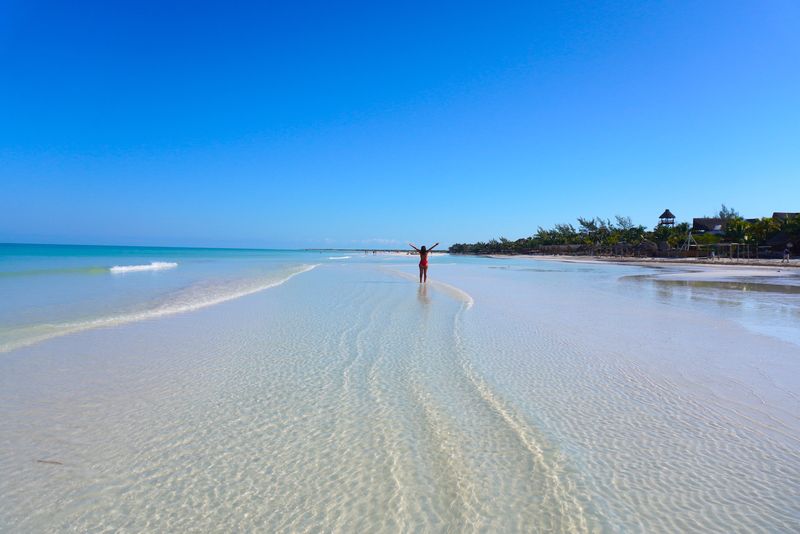
Unlike its rowdier Quintana Roo neighbors, Isla Holbox offers a peaceful sanctuary where golf carts replace cars and time seems to slow down. The island’s shallow, warm waters extend hundreds of feet offshore, creating naturally safe swimming conditions for families.
Crime rates remain exceptionally low here compared to mainland destinations. The laid-back fishing village atmosphere discourages the party crowd that brings trouble to other Mexican beach towns.
Bioluminescent plankton sometimes light up the nighttime waters, creating magical swimming experiences without the dangers found elsewhere. The island’s relative isolation (reached only by ferry) helps maintain its safe, tranquil character while still offering comfortable accommodations for visitors.
5. Ixtapa-Zihuatanejo, Guerrero
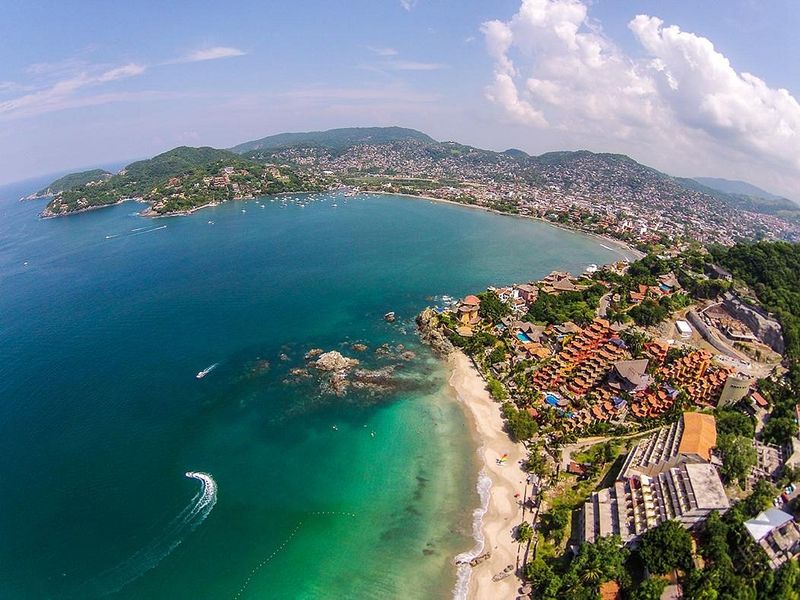
Sharing a state with notorious Acapulco, Ixtapa-Zihuatanejo struggles with similar security concerns. Gang violence has increased in recent years, with criminal groups fighting for control of this tourist-heavy area.
The beaches themselves appear postcard-perfect with palm trees and golden sand, but armed robberies targeting tourists have become increasingly common. Hotel security varies widely, with some resorts employing armed guards while others offer minimal protection.
Water quality issues plague certain beaches in the area, particularly after heavy rains when sewage systems overflow. Many visitors report stomach illnesses after swimming in contaminated waters that don’t meet international safety standards.
6. Playa Balandra, Baja California Sur (Safer Alternative)
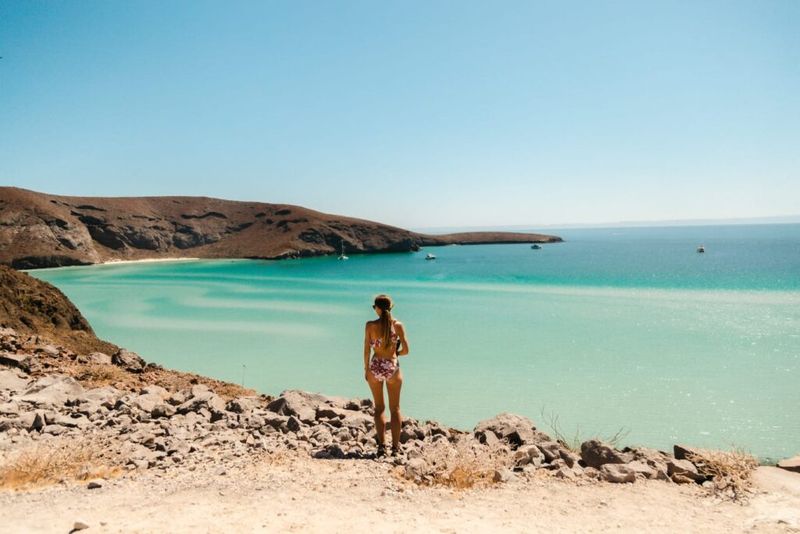
Mother Nature created the perfect natural swimming pool at Playa Balandra. This sheltered bay features crystal-clear, shallow waters with virtually no waves or currents, making it incredibly safe for swimmers of all ages.
The beach’s horseshoe shape provides natural protection from ocean currents. Environmental protections limit visitor numbers daily, preventing overcrowding and maintaining the pristine conditions that make this beach special.
Unlike many Mexican beaches, Playa Balandra has little commercial development and minimal crime. The biggest risk here might be sunburn from spending too much time in this slice of paradise! Regular police patrols and environmental officers ensure both visitor safety and protection of this ecological treasure.
7. Manzanillo, Colima
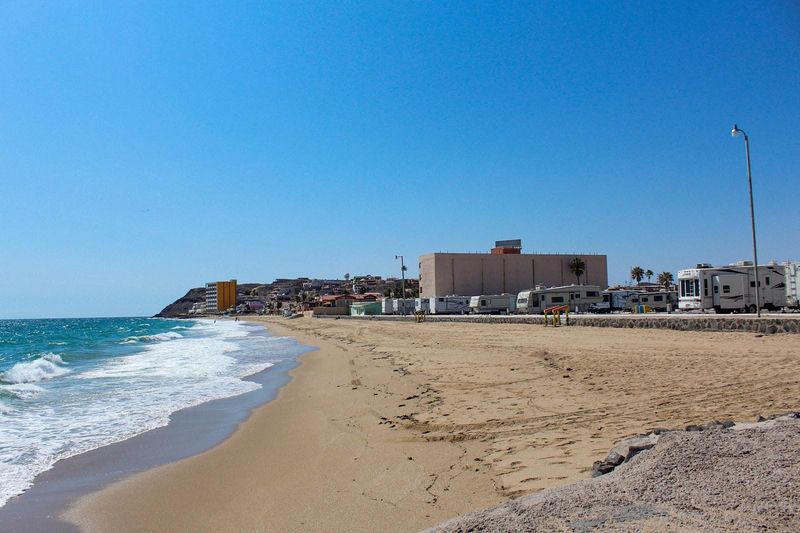
Manzanillo’s beaches suffer from serious environmental hazards that many tourists don’t realize until it’s too late. Industrial pollution from nearby port activities has contaminated several beach areas, leading to respiratory issues and skin irritations for swimmers.
Drug cartel activity has increased in Colima state, with violent incidents occurring even in tourist zones. The beaches themselves feature dark sand and strong undertows that create dangerous swimming conditions, especially for children or inexperienced swimmers.
Many hotels fail to warn guests about water quality problems or security concerns. Military checkpoints throughout the region hint at the ongoing security challenges that plague this once-popular beach destination.
8. San Agustinillo, Oaxaca
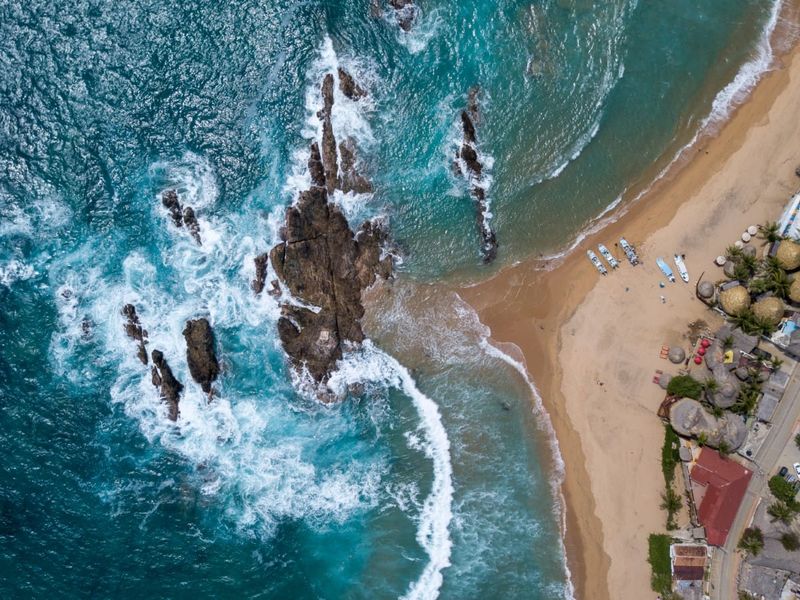
San Agustinillo’s powerful waves attract surfers but create treacherous conditions for casual swimmers. The beach’s steep drop-off means you’re in deep water just a few steps from shore, creating drowning risks for children and weak swimmers.
Strong undertows can pull unsuspecting bathers out to sea in seconds. The beach lacks consistent lifeguard coverage, leaving tourists to fend for themselves when emergencies occur.
While less crime-plagued than other entries on this list, isolation comes with its own risks. Medical facilities are extremely limited, meaning serious injuries require hours of travel to reach adequate care. This combination of dangerous waters and minimal emergency services makes San Agustinillo a risky choice despite its natural beauty.
9. Cancun Hotel Zone, Quintana Roo
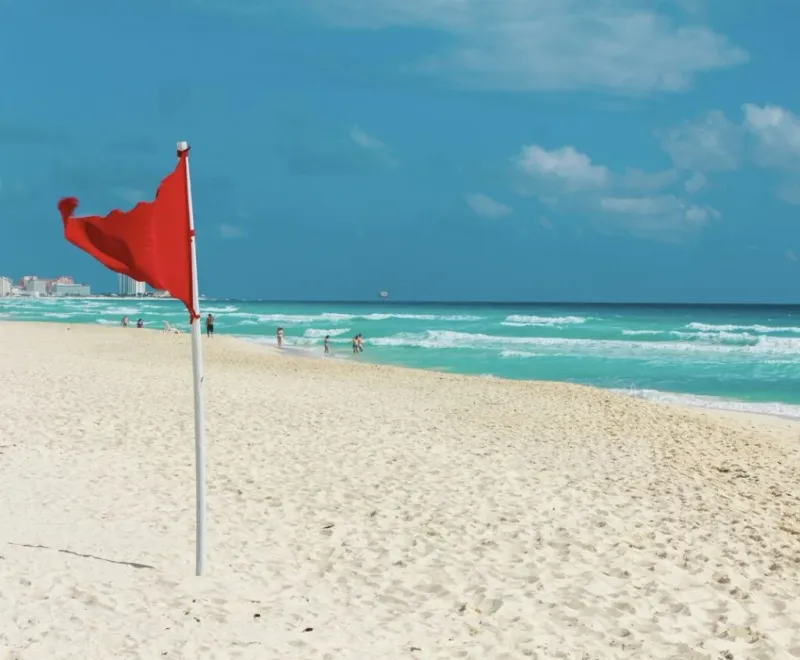
Cancun’s Hotel Zone presents a different kind of danger – one hidden beneath perfect-looking white sand beaches. Strong rip currents claim multiple lives each year, often tourists who ignore red flag warnings or swim while intoxicated.
Beach erosion has created dangerous drop-offs and unstable sand shelves along many sections. Hurricane damage to protective offshore reefs has increased wave intensity and current strength, making swimming hazardous even for experienced swimmers.
Crime has increased significantly in recent years, with drug-related violence spilling into tourist areas. Drink spiking and robbery target vulnerable tourists, especially those traveling alone or partying late at night. The picture-perfect appearance masks serious safety concerns that travelers should consider before booking.
10. Mazunte, Oaxaca
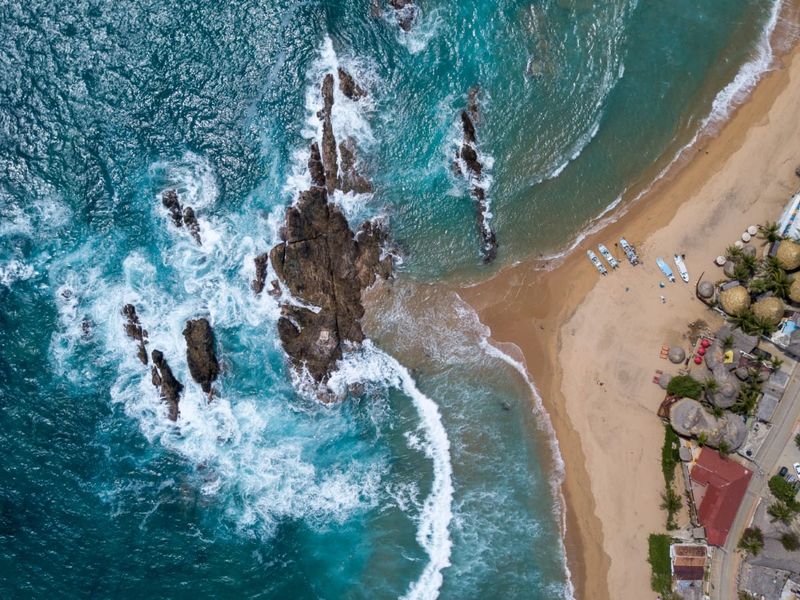
Mazunte’s dramatic beach setting comes with equally dramatic dangers. Massive waves crash directly onto the shoreline with little warning, creating serious risks for anyone swimming or even walking near the water’s edge.
The beach’s steep underwater slope creates powerful backwash that can drag swimmers out to sea. Even experienced swimmers have drowned here after being caught in suddenly changing conditions.
While the bohemian atmosphere attracts free spirits, limited police presence means theft and personal safety issues go unaddressed. Medical facilities consist of basic clinics unable to handle serious emergencies, requiring lengthy transport to larger cities for proper treatment. The beach’s isolation compounds these risks by delaying emergency response times.
11. Tulum Beach, Quintana Roo
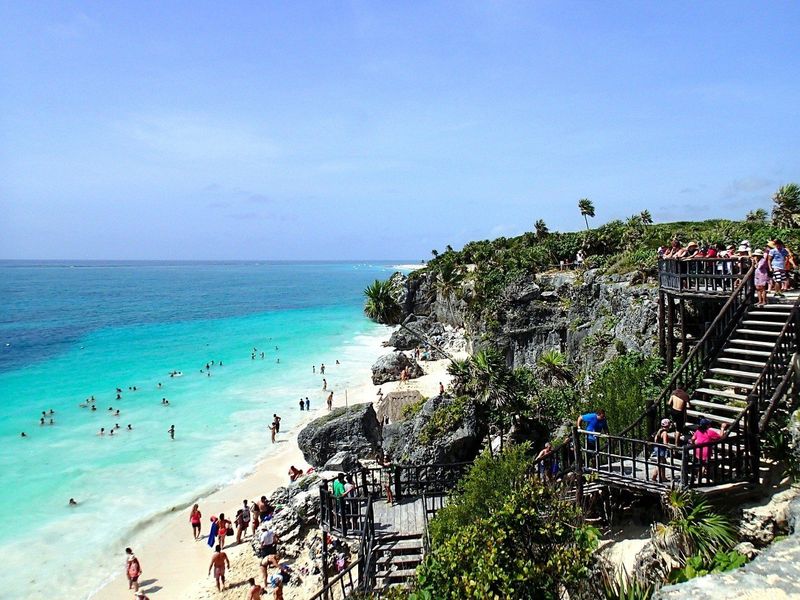
Tulum’s Instagram-worthy beaches hide growing safety concerns. The once-peaceful destination has seen a disturbing rise in violent crime, including shootings in popular beach clubs and restaurants that have killed foreign tourists.
Territorial disputes between drug gangs have transformed this bohemian paradise into a battleground. Beach access has become increasingly restricted as private developments illegally block public shoreline.
Environmental problems compound safety issues, with massive seaweed blooms creating hydrogen sulfide gas that causes respiratory problems. Sewage infrastructure hasn’t kept pace with explosive growth, leading to contaminated groundwater that sometimes reaches swimming areas. The stunning scenery masks serious problems that worsen each year.
12. Huatulco, Oaxaca (Safer Alternative)
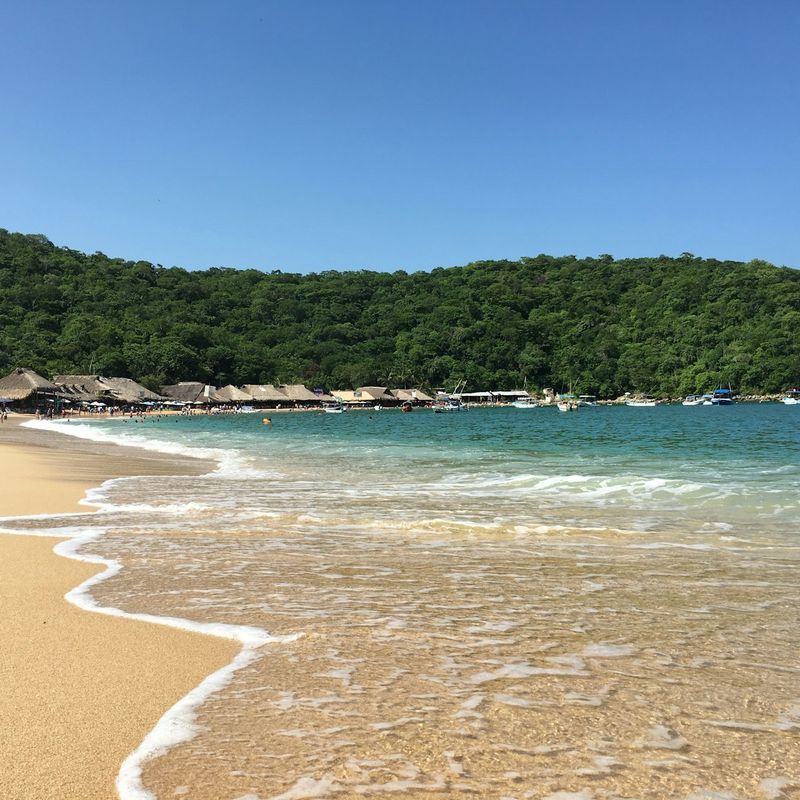
Huatulco offers a refreshing alternative to Mexico’s riskier beaches with its nine well-protected bays creating naturally sheltered swimming conditions. The carefully planned development includes proper infrastructure that prevents the sewage and water quality issues plaguing other destinations.
Federal protection of the Huatulco National Park ensures environmental standards remain high. The government maintains a strong security presence to protect this important tourism development, resulting in significantly lower crime rates than surrounding areas.
Many beaches feature gentle slopes into the water rather than dangerous drop-offs. Certified lifeguards monitor the most popular swimming areas, providing quick response to any emergencies. This combination of natural protection and thoughtful development makes Huatulco stand out as a safer option.
13. Playa del Carmen, Quintana Roo
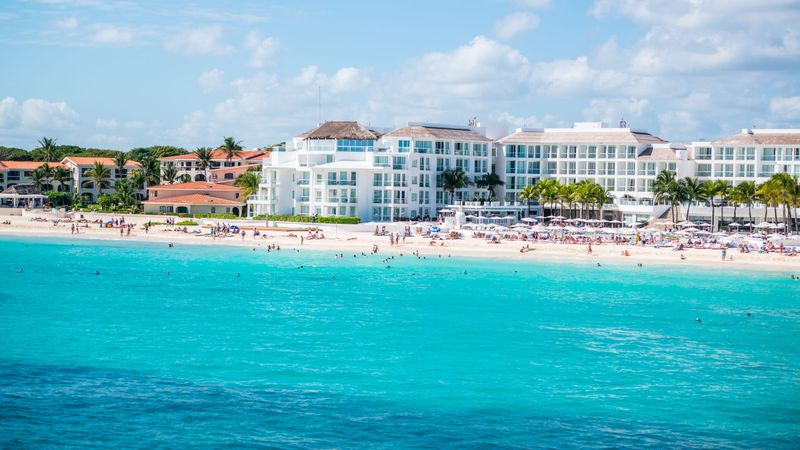
Playa del Carmen’s once-tranquil atmosphere has been shattered by increasing cartel violence that sometimes spills onto its famous beaches. Shootings at beach clubs and restaurants have killed tourists caught in the crossfire of territorial disputes.
Beach erosion has created dangerous swimming conditions in many areas, with powerful undertows that can surprise even strong swimmers. Predatory vendors aggressively target tourists, sometimes becoming threatening when rebuffed.
Drink spiking incidents have increased dramatically, with victims later robbed or assaulted. While the central tourist zone maintains better security, venturing even a few blocks away significantly increases risk exposure. The beach’s beauty masks growing safety problems that have transformed this former fishing village into a high-risk destination.
14. Puerto Escondido, Oaxaca
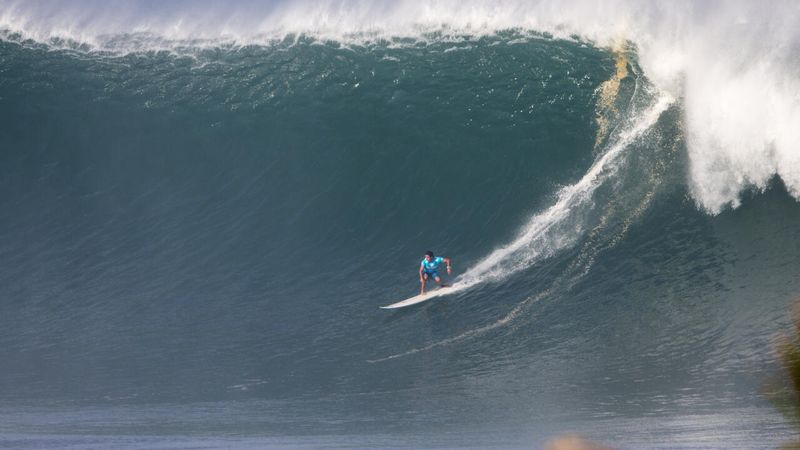
Puerto Escondido’s massive waves have earned it the nickname “Mexican Pipeline,” attracting professional surfers worldwide. These same waves make ordinary swimming extraordinarily dangerous, with powerful undertows claiming multiple lives annually.
The main beach, Zicatela, posts permanent red flags warning against swimming, yet tourists regularly ignore these warnings with tragic consequences. Even experienced swimmers can quickly find themselves overwhelmed by the crushing waves and powerful currents.
Limited lifeguard coverage means rescue attempts often come too late. While crime rates remain lower than many Mexican beach destinations, the natural dangers more than compensate. The beach’s beauty creates a deceptive sense of safety that has proven fatal for many visitors who underestimated its power.
15. Cabo San Lucas, Baja California Sur
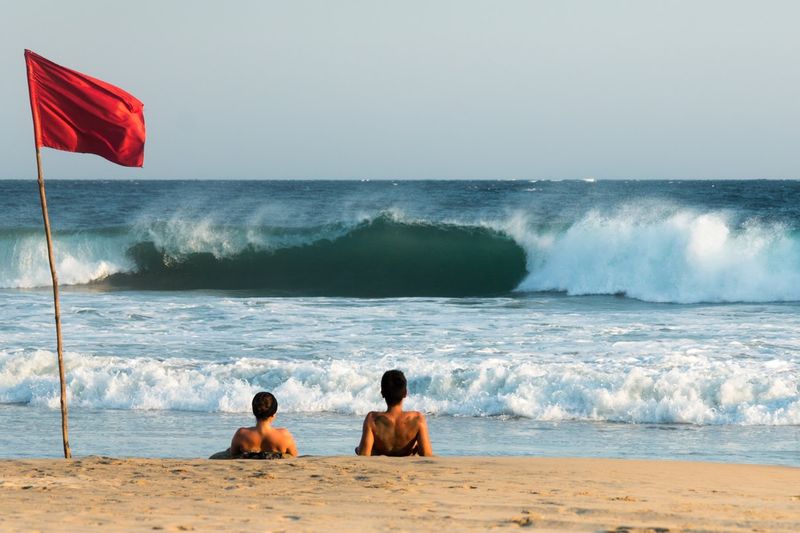
Cabo San Lucas offers stunning vistas but dangerous swimming conditions that catch many tourists by surprise. Most beaches feature powerful undertows and sudden drop-offs that have claimed numerous lives, including strong swimmers.
Rogue waves occasionally sweep unsuspecting beachgoers from seemingly safe shoreline positions. Many hotels fail to adequately warn guests about which beaches permit safe swimming versus those with deadly conditions.
While safer than some entries on this list, Cabo has seen increasing crime targeting tourists, including armed robberies and express kidnappings. Cruise ship crowds create perfect opportunities for pickpockets and scam artists. The area’s popularity with celebrities creates a false sense of security that masks real dangers both in and out of the water.
16. Playa la Ropa, Zihuatanejo
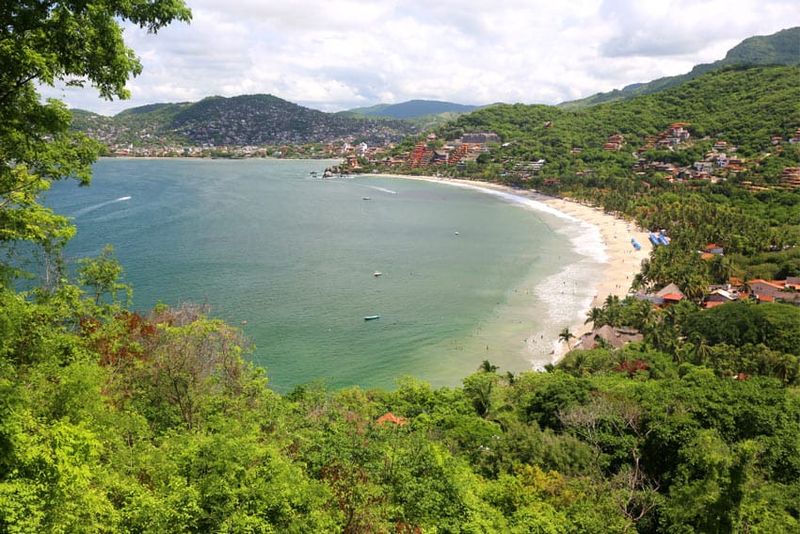
Playa la Ropa appears gentler than neighboring beaches but hides seasonal dangers many tourists discover too late. During summer months, powerful riptides develop with little warning, pulling swimmers far from shore.
The beach sits in Guerrero state, which carries a Level 4 “Do Not Travel” advisory from the U.S. State Department due to crime. Armed robberies targeting tourists have occurred directly on the beach and surrounding access roads.
Water quality issues emerge after heavy rainfall when runoff contaminates swimming areas. Many visitors report skin infections and gastrointestinal illness after swimming, particularly near creek outlets. The beach’s beauty and calm appearance in travel photos masks these serious safety concerns that worsen during peak tourist seasons.
17. Sayulita, Nayarit
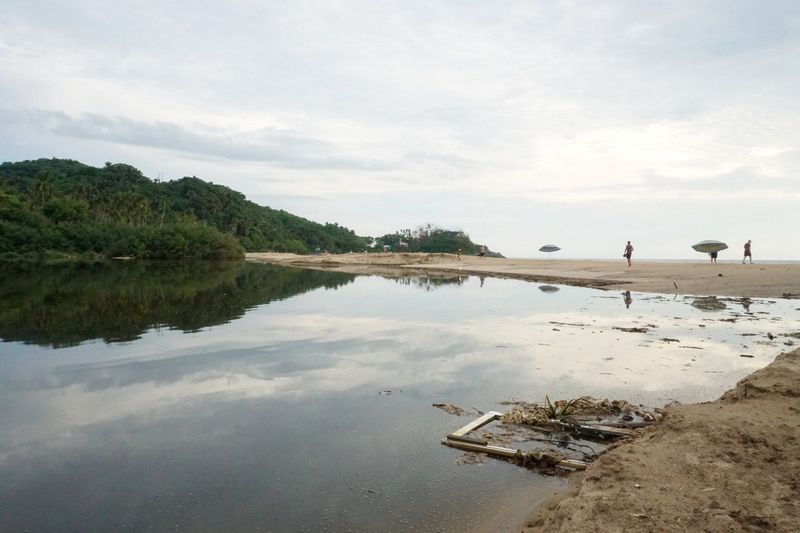
Sayulita’s bohemian charm masks serious health risks that have sickened countless visitors. The town’s inadequate sewage system frequently overflows during rainy seasons, sending untreated waste directly into swimming areas.
Water quality testing regularly reveals dangerous bacteria levels far exceeding international safety standards. Many tourists develop severe intestinal illnesses after swimming in contaminated waters or consuming local seafood.
While violent crime remains lower than some Mexican beaches, petty theft has increased with the tourist boom. The beach’s powerful surf creates dangerous conditions for inexperienced swimmers, especially children. Despite its popularity with the Instagram crowd, Sayulita’s infrastructure problems create health hazards that smart travelers should avoid.
18. Puerto Morelos, Quintana Roo
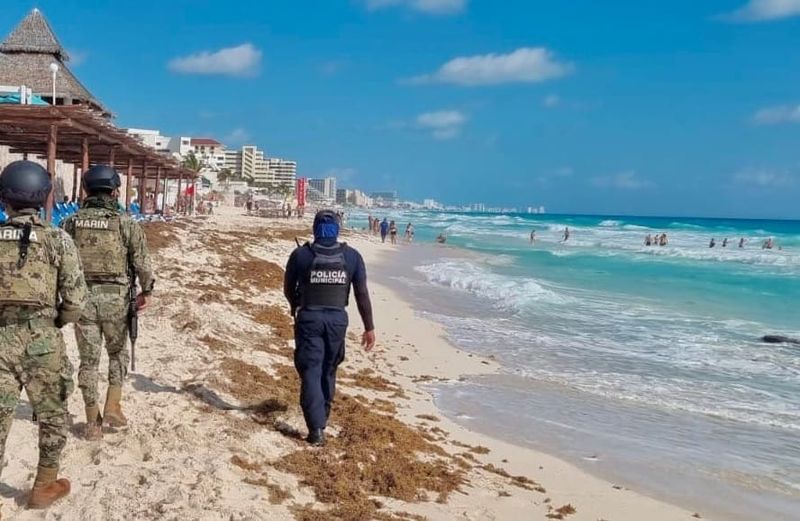
Puerto Morelos once offered a quieter alternative to Cancun, but cartel violence has increasingly encroached on this formerly peaceful town. Shootings related to drug territory disputes have occurred in broad daylight, sometimes in areas frequented by tourists.
The beach itself features strong currents that develop with little warning, especially when winds shift direction. Hurricane damage to the protective offshore reef has increased wave action and erosion, creating unstable swimming conditions.
Development has outpaced infrastructure, leading to sewage problems that occasionally contaminate swimming areas. While still safer than some Quintana Roo beaches, Puerto Morelos faces growing security challenges that tarnish its once-sterling reputation as a family-friendly destination.
19. Playa Rinconcito, San Agustinillo
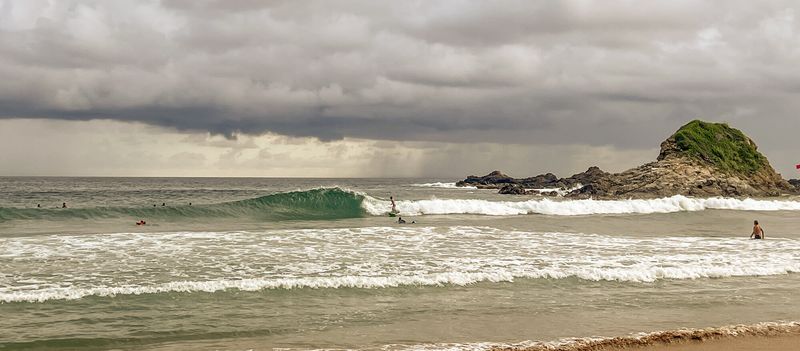
Playa Rinconcito’s small cove creates a false sense of security that has proven fatal for unwary swimmers. The beach’s unique topography creates powerful currents that can trap swimmers against rocky outcroppings or pull them out to sea.
No lifeguards monitor this remote beach, meaning swimmers face significant delays in emergency response. The surrounding area has minimal police presence, creating opportunities for theft and personal safety concerns.
Medical facilities consist of basic clinics unable to handle serious emergencies like near-drownings or major injuries. While less crowded than famous Mexican beaches, Playa Rinconcito’s isolation compounds its dangers by delaying rescue and medical treatment when accidents occur.
20. Playa Mermejita, Mazunte
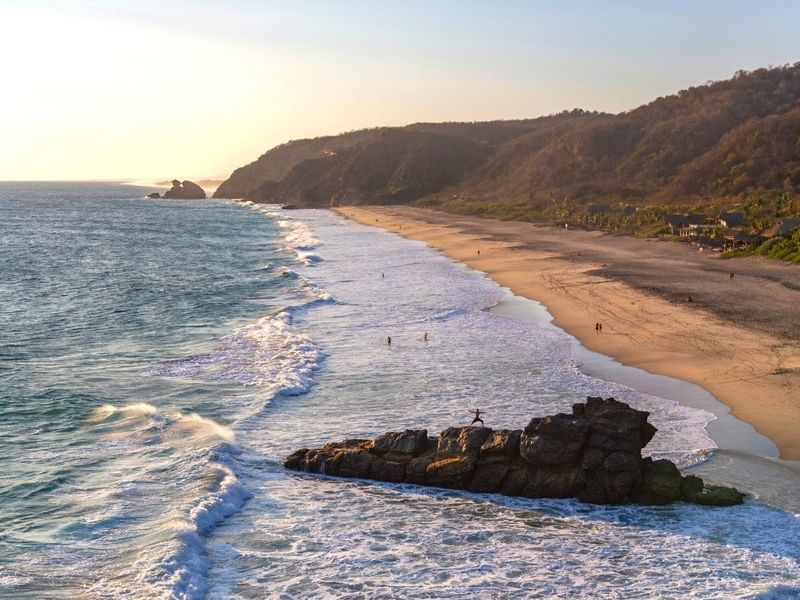
Playa Mermejita offers dramatic scenery that comes with equally dramatic dangers. Enormous waves crash directly onto a steep-sloped beach with crushing force, creating conditions where even wading ankle-deep can prove fatal.
Multiple drownings occur annually when visitors underestimate the power of the waves and sudden drop-offs. The beach completely lacks lifeguard services or warning systems to alert visitors to changing conditions.
The isolated location means emergency medical care requires transport over rough roads that can take hours. While the sunset views attract photographers, the beach’s powerful undertow has earned it a reputation as one of Mexico’s most dangerous swimming locations. Even experienced swimmers avoid entering the water at this deadly but beautiful spot.
21. Playa del Amor, Zipolite
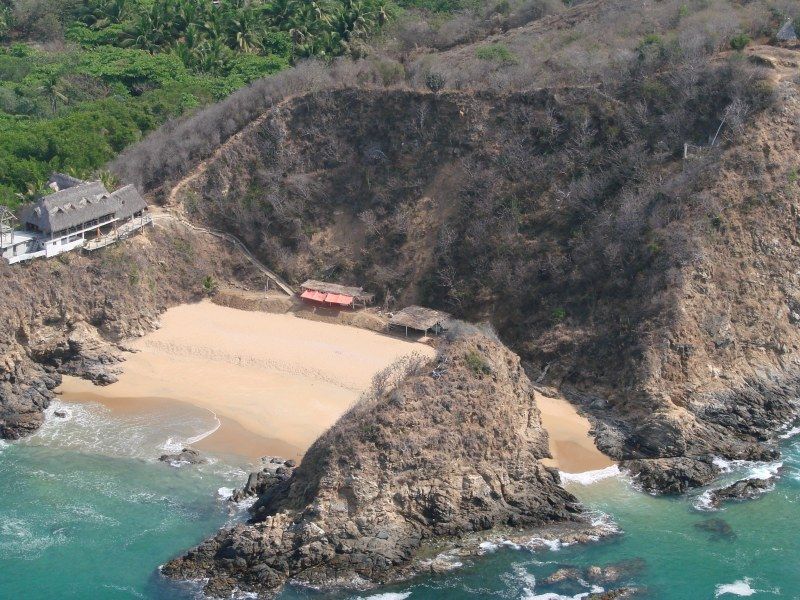
Playa del Amor sits at the eastern end of notorious Zipolite Beach, sharing the same deadly currents that give the main beach its “Beach of Death” nickname. The small cove creates swirling underwater currents that can trap swimmers against rocks or drag them out to sea.
The clothing-optional policy attracts visitors who often swim after consuming alcohol, increasing already significant drowning risks. No permanent lifeguard stations monitor this section of beach.
Medical facilities remain extremely limited, with serious injuries requiring transport to Huatulco or Puerto Escondido over mountain roads. While the secluded cove appears protected, it experiences the same dangerous conditions that make Zipolite one of Mexico’s deadliest beaches for swimmers.
